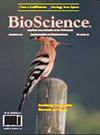Predictors of efficacy, tolerability and discontinuation of Transcranial Direct Current Stimulation (tDCS) for Mild Cognitive Impairment (MCI) and Alzheimer’s Disease (AD): a meta-analysis and meta-regression
IF 0.5
4区 农林科学
引用次数: 0
Abstract
Numerous patients with mild cognitive impairment (MCI) or Alzheimer’s disease (AD) are refractory to pharmacological treatment, and non-invasive brain neurostimulation has been investigated as another possibility for improving cognition. The performed meta-analysis and meta-regression verified predictors of efficacy, tolerability, and discontinuation of transcranial direct current stimulation (tDCS) for treating MCI or AD. The analyzed studies used the Mini-Mental State Exam, Montreal Cognitive Assessment, or Alzheimer's Disease Assessment Scale - Cognitive Subscale scores as outcome measures. Databases (PubMed, Embase, and Web of Science - primary collection) were searched, resulting in 12 published randomized and controlled trials. The risk of bias assessment was based on Cochrane Review recommendations, considering study characteristics. Other evaluated outcomes were the number of adverse effects (tolerability) and dropouts. Overall and anodal tDCS improved cognition compared to the sham protocol. Group comparisons did not show statistically significant differences for adverse effects and dropouts. Session duration was a response predictor, as stimulations of up to 20 minutes for ten days or more improved the outcome achievement. The AD diagnosis covariate also affected efficacy. The findings should be interpreted carefully in clinical practice because the stimulation effect may vary among subjects.经颅直流电刺激(tDCS)治疗轻度认知功能障碍(MCI)和阿尔茨海默病(AD)的疗效、耐受性和停药预测因素:荟萃分析和荟萃回归
许多轻度认知功能障碍(MCI)或阿尔茨海默病(AD)患者对药物治疗无效,而非侵入性脑神经刺激疗法作为改善认知功能的另一种可能已得到研究。所进行的荟萃分析和荟萃回归验证了经颅直流电刺激(tDCS)治疗 MCI 或 AD 的疗效、耐受性和停药预测因素。所分析的研究采用迷你精神状态检查、蒙特利尔认知评估或阿尔茨海默病评估量表--认知分量表评分作为结果测量指标。对数据库(PubMed、Embase 和 Web of Science - 主要收录)进行了检索,共检索到 12 项已发表的随机对照试验。偏倚风险评估以 Cochrane 综述建议为基础,并考虑了研究特点。其他评估结果包括不良反应(耐受性)和辍学人数。总体而言,与假方案相比,阳极 tDCS 可改善认知能力。在不良反应和辍学方面,组间比较未显示出统计学上的显著差异。疗程持续时间是预测反应的一个因素,因为持续十天或更长时间、长达 20 分钟的刺激可改善结果的实现。注意力缺失症诊断协变量也会影响疗效。在临床实践中应谨慎解释这些研究结果,因为不同受试者的刺激效果可能不同。
本文章由计算机程序翻译,如有差异,请以英文原文为准。
求助全文
约1分钟内获得全文
求助全文
来源期刊

Bioscience Journal
AGRICULTURE, MULTIDISCIPLINARY-AGRONOMY
CiteScore
1.10
自引率
0.00%
发文量
90
期刊介绍:
The Bioscience Journal is an interdisciplinary electronic journal that publishes scientific articles in the areas of Agricultural Sciences, Biological Sciences and Health Sciences. Its mission is to disseminate new knowledge while contributing to the development of science in the country and in the world. The journal is published in a continuous flow, in English. The opinions and concepts expressed in the published articles are the sole responsibility of their authors.
 求助内容:
求助内容: 应助结果提醒方式:
应助结果提醒方式:


